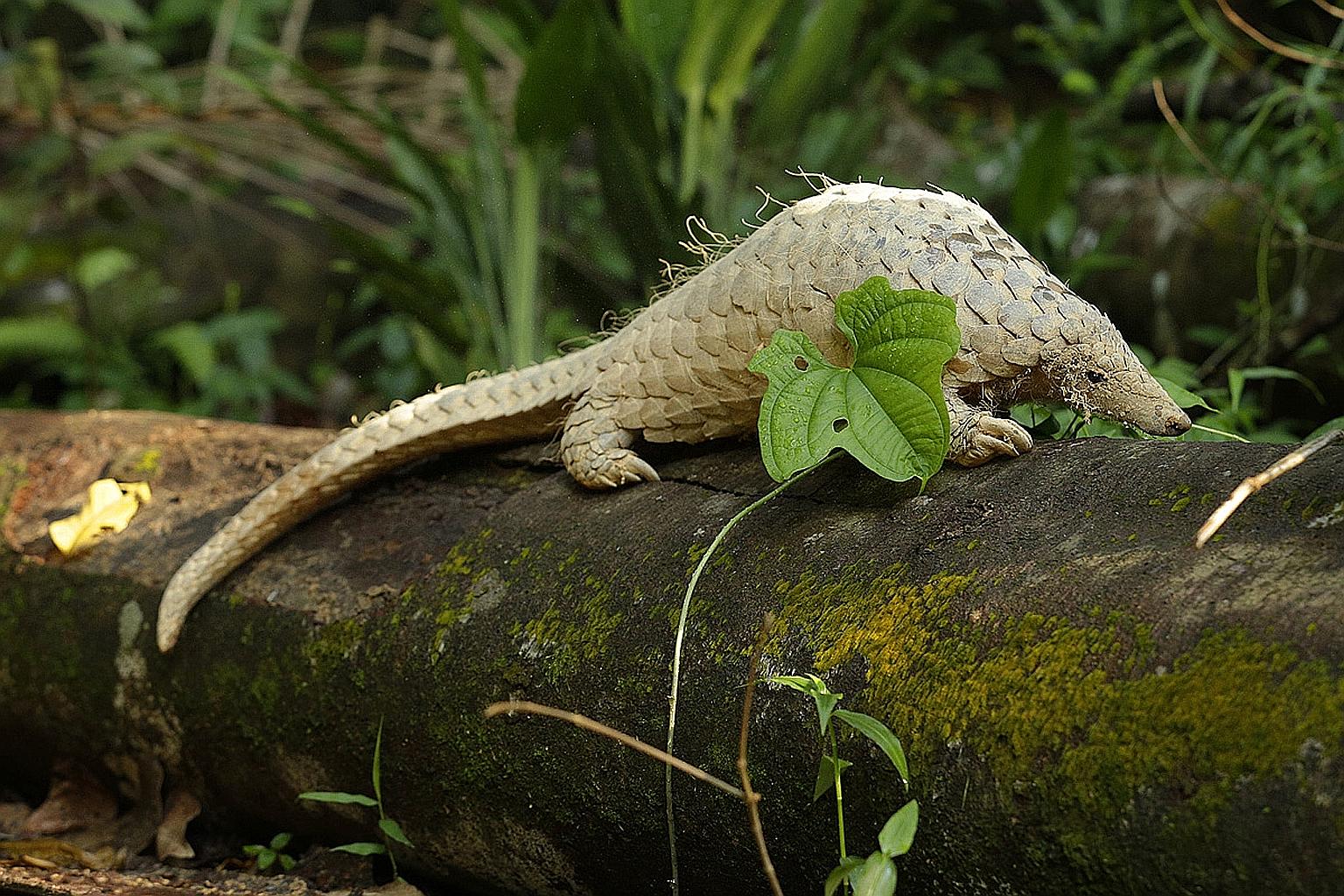Pangolin's suit of armour its greatest weakness
Its scales are coveted in traditional medicine, but trade in the mammal banned from Jan
Sign up now: Get ST's newsletters delivered to your inbox

The main threats to Singapore's native Sunda pangolins are habitat encroachment and motor accidents. Work is ongoing to learn more about the animals so that conservation efforts can be maximised.
PHOTO: WILDLIFE RESERVES SINGAPORE
Follow topic:
The pangolin's armour protects it from most predators, except the one driving it to the brink of extinction - humans.
Pangolins curl up into a defensive ball when threatened by predators such as leopards and tigers so that their hard scales envelop all of their soft parts. Unfortunately, humans can simply pick them up and cart them away.
These mammals are taken from the wild for their scales, used in traditional medicine by those who believe they can reduce bleeding and help lactating women produce more milk. This is despite the fact that the claim is unproven; their scales are made of keratin - the same protein found in fingernails.
There are eight species of pangolins worldwide, but most trafficked pangolin parts end up bound for Asia, where use of traditional medicine is widespread.
This poaching has resulted in all of the pangolin species being threatened with extinction.
But there is good news - it will be illegal for traditional medicine practitioners to get hold of pangolins and their parts, as international commercial trade in all eight species will be banned from next month. This means that pangolins, their parts or products cannot be imported, exported or re-exported.
-
8
Number of species found worldwide. Only one, the Sunda pangolin, can be found in Singapore.
100
In February, it was estimated that there were more than 100 wild pangolins here.
This new trade ban was fixed in September, during the 17th meeting of the Conference of the Parties to the Convention on International Trade in Endangered Species of Wild Fauna and Flora (Cites) in Johannesburg, South Africa.
Currently, pangolins are listed on Cites Appendix II, which is for species that are not necessarily threatened with extinction now, although they may become so unless trade is closely controlled.
Species on this list are allowed to be traded only with proper Cites permits certifying that they were legally obtained, and that the exports are sustainable.
Most of the Cites member nations at the meeting - including Singapore - agreed to list all eight species of pangolins on Appendix I, which means all international commercial trade in wild-caught pangolins is prohibited.
"Listing in Appendix I offers dual protection as it requires both an import and an export permit, and there are no exceptions to the prohibition on international trade for commercial purposes," said Ms Madhu Rao, regional adviser for the Singapore-based Wildlife Conservation Society.
She added that the new classification would also help to strengthen implementation of national laws for protection of these species, as penalties for illegal trade in Appendix I species are generally more severe.
A spokesman for the Agri-Food and Veterinary Authority of Singapore said those found guilty of illegally trading pangolins, their parts or products can be fined up to $50,000 and/or be jailed for up to two years.
Of the eight species found worldwide, only one, the Sunda pangolin, can be found in Singapore.
Poaching is not as widespread here, but the creatures are still critically endangered due to the loss of forest habitats. In February, it was estimated that there were more than 100 wild pangolins here.
But work is ongoing to study the nocturnal animals and learn more about them, so that conservation efforts can be maximised.
Dr Cheng Wen-Haur, deputy chief executive and chief life sciences officer at Wildlife Reserves Singapore (WRS), which studies the pangolins, said the main threats to Singapore's pangolins are habitat encroachment and motor-vehicle accidents.
"Singapore's native Sunda pangolin has been one of WRS' conservation priority species for years.
"We rehabilitate and release local injured and displaced pangolins, support ongoing research in the wild, educate and raise public awareness of this unique animal which is part of Singapore's biodiversity," he said.

